914Driver said:Ambushed by Lawrence of Arabia 102 years ago.
Sand people...
In reply to slowbird :
This year's "you can't make this E36 M3 up" award goes to . . .
"Sir, we have a whale of a problem out here. I think you'd better come down."
"You'd better not be messing with me Vander Schmidt. I've had enough of your tall tales."
I'll show myself out.
The Lost Engines of Roanoke were fascinating. In the early 1950s, Norfolk & Western retired a handful of their old M, M1 and M2 4-8-0 "Mollies", which were largely demoted to branch and switcher service by that point, with the acquisition and construction of more modern 0-8-0s. A large number of them were sent to the Virginia Scrap Iron & Metal Company in Roanoke, and a good portion of them were cut up over the years. But 4 N&W steam engines, 2 M2s, an M2c and a W2 Consolidation, sat there, sans tenders, for almost 60 years, visible through a fence and covered in kudzu vine, known amongst railfans. When the yard closed down in '08 and plans were made to level the site and build a hospital, people sprung into action to save the N&W steam engines, as well as a pair of Chesapeake Western DS4-4-100 diesel switchers.






The most accessible of the four, and thus the most familiar with fans, was N&W M2 #1118, built by Baldwin in 1910. The fence actually cut between #1118 and #11134, meaning #1118 was actually outside of the property fence. Despite being the most exposed of the 4, its actually the most intact locomotive of the bunch. While missing her smokestack and pilot beam, she has the most complete running gear of any of them, only missing the eccentric rod on the fireman's side.











N&W #1118 has been acquired by the Roanoke NRHS Chapter and moved to their site for an eventual cosmetic restoration. In this photo, you can see two different generations of N&W lettering and numbering bleeding through on the cab.

N&W #1134 was also from the same 1910 Baldwin batch as the #1118. While at first glance it appears more complete than the #1118, largely due to it still having its stack and the smokebox interior components all still being present, it is missing the connecting rods and eccentric rods on both sides, and the coupling rods between the rear three drivers on the engineer's side. The coupling rod was torched just behind the main driver crank pin. The running boards are also completely MIA as well.


Impressively the cab wood is all pretty intact




You can just see the fence that cuts between #1134 and the #1118 ahead of her.

At some point, someone opened the smokebox door and took a peak inside. You can also see the fence separating the #1118 from the #1134.

N&W #1134 was disassembled and moved to Railroad Museum of Virginia in Portsmouth and nicely restored, being joined with one of a pair of tenders that were in the process of being converted to water canteens before suddenly being sold to the scrapyard. The tender is not original to the #1134, but her own tender was long cut up, so the canteen tender off of a Class A 2-6-6-4 makes do.
#1151, while in the worst shape, is more important from a preservation standpoint. Of the 6 N&W 4-8-0s preserved, the #1151 is the only one built by N&W at their Roanoke shops (M #475 at Strasburg along with #1118 and #1134 were Baldwin-built, and #433 in Abingdon is Alco-built) and the only preserved M2c. The M2c was the third batch of Roanoke-built M2s and many later received stokers and superheaters, as the #1151 did, making her unique in that regard. The M2c was also unique in that it used Baker valve gear, unlike the Walschaerts on all the other M2s and M1s or the Stephenson on the Ms.
Like #1118, the #1151 is missing the smokestack. But it is also missing the smokebox front and door, and inside the smokebox it is missing all the flues and superheater elements. The rumor is that #1151 was going through a major shopping by N&W when they decided to instead remove it from service, explaining why there are no flues or superheats. The connecting rods, coupling rods and eccentric rods are also not on the engine, and appear to have been unbolted instead of cut, which also lends credence to this theory

.





#1151 is at the VMOT in Roanoke as well, awaiting her chance at a restoration.

Probably the most historically significant engine was #917, which is a W2 Consolidation. This engine is the evolutionary link between the earlier G class Consolidation, like the #6 at VMOT, and the M Class Molly, like #475 at Strasburg. #917 is the only surviving W-series Consolidation, so it's a rare piece. The connecting rod, crosshead, crosshead guides, and the whole valve gear assembly are missing from the fireman's side, but like the #1151, some of these parts were found on the ground nearby. Although it was originally built with inboard Stephenson valve gear, at some point it was rebuilt with Baker valve gear. The smokestack is still in place, as are the two single-stage air compressors mounted separately on her fireman's side, and the firebox door was seized in the slightly open position.

The W2s, like the M, have a backhead that extends to the very rear of teh cab, so the fireman stands on the tender deck and pitches coal across to the locomotive. Behind the #917 was the 2-axle lead truck off another long-scrapped Molly.






Interestingly, this rare piece didn't go to a museum, but instead to a diner in Belleville, OH, who has painted it up, but in non-original colors, and mated it to a comically tiny 2-axle tender. On further inspection, that tender truck looks like it might have been the lead truck from the junkyard.

The final rolling stock to make it out of the yard was Chesapeake Western #662 and #663, a pair of 1946 vintage Baldwin DS-4-4-1000 switchers. These two, along with long-scrapped #661, were the first diesels on the Virginia shortline. I can't seem to find any data on when they were retired, but if I had to guess, maybe sometime in the early-to-mid '60s (Ah-ha, found it, retired in '64 and traded in on Alco T6s). That was when a lot of Baldwin stuff hit the scrap lines. These were the easiest to spot and access, as they were outside the fence, farther up the line from #1118, essentially along the shoulder of the road. The cab windows were all knocked out, but other than that they seemed very complete, albeit extremely rusty.







The Roanoke NRHS chapter hammered out a deal with the VMoT where they would donate the #662 if the VMoT cosmetically restored the #663 for them.
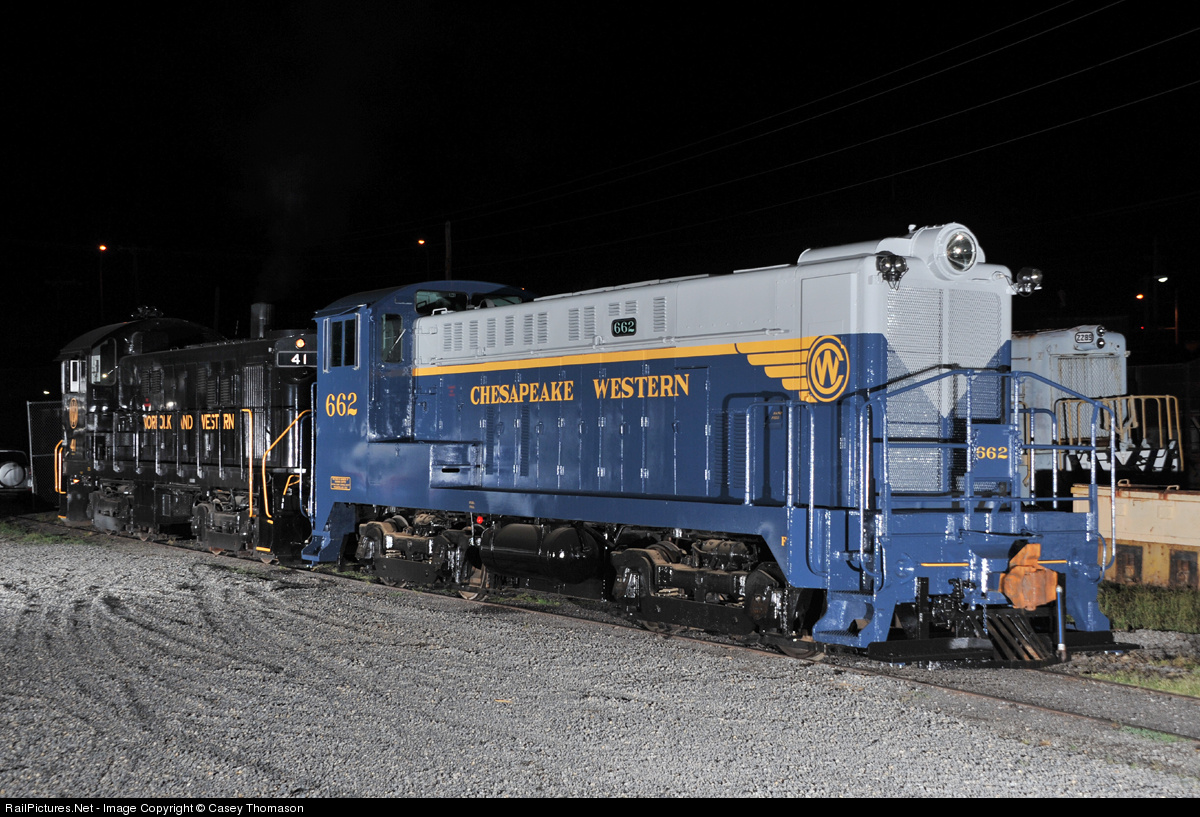
I was looking for pictures of Atlantic Coast Line locomotives and stumbled upon this slightly brighter-shade lookalike, the Waccamaw Coast Line Railroad.

It's not just coincidental either.
The line was opened in 1900 by the Conway Coast and Western Railroad, a predecessor of the Atlantic Coast Line Railroad
The ACL bought the CC&W in 1912. Much later, after more mergers, Waccamaw was sold in the 80s, and again in the 90s before ceasing operations.
I'm even more excited about planning a layout. I guess, just driving around, I had no idea how much UP presence there is. I do enjoy a UP livery from time to time.
Its funny that Norfolk & Western, often thought of as the masters of the steam engine and the builders of such engineering marvels as the streamlined 100mph capable J Class Northerns and the absurdly powerful Y6 compound articulateds, relied so heavily on the 4-8-0 Mollie. The 4-8-0 configuration, known as a Twelve-Wheeler or a Mastodon on the few other lines that used them, was an evolutionary misstep.

When railroads found that the 2-8-0 Consolidation was starting to become insufficient for the evolving needs, there were three evolutionary offshoots. The first was the 2-10-0 Decapod, which was just taking the Consol and adding an extra drive axle to it. It proved to be unpopular and largely a failure (don't tell the PRR, they built 600 of the things). Then, almost at the same time, you had the 2-8-2 Mikado and the 4-8-0 Twelve Wheeler. The Mikado won out as the optimal design. Adding a single axle trailing truck allowed a larger firebox, which in turn allowed a larger boiler and cylinders, and resulted in an engine that could be worked hard without sturggling to maintain boiler pressure.
But Norfolk & Western, and presumably the few other lines that operated 4-8-0s, had a different line of thinking. By extending the boiler forward a few feet and supporting it with a two-axle lead truck, you could, theoretically, make a more powerful version of a Consolidation. This, after all was the thinking, that resulted in the Mogul evolving into the successful Ten-Wheeler. The problem was, at 8 drive wheels, you were really at the limit of what you could do with a firebox that size. So the N&W M Class developed a reputation for being a poor steaming engine. When worked hard, the firebox was not large enough to supply the longer boiler. N&W later experimented with stokers and superheaters, but they carried that reputation still.

They also were not liked by crews due to the fact that they were not a very comfortable engine to operate. Like the N&W's W Class Consolidations, the backhead of the boiler extended all the way to the rear of the cab. This resulted in the engineer being crammed in alongside the boiler and the cab, while the fireman had to stand on the tender deck and pitch coal across into the firebox.


Also, due to the weight of the boiler and firebox extending back that far, and without a trailing truck to support the weight, the spring rigging on the rear driver had to be made very stiff to support all the weight hanging out behind it, making them very rough riding. The short 56" drivers, which are harder to balance than a tall driver, also didn't help matters.
Despite these issues, they did make a respectable 40,163lbs of tractive effort (the later superheated versions pushed that to 52,000lbs) and outperformed the old Consolidations, so Norfolk & Western ended up with over 250 4-8-0s, from Alco, Baldwin and their own Roanoke shops. The Ms were the last non-articulated freight engine that the N&W would own (excepting a freight variant of their earlier K-series Mountains), with the N&W bypassing the Mikado, the Berkshire and any 10-coupled engines. They were rather quickly displaced from mainline freight usage by the arrival of the Z class 2-6-6-2s, A class 2-6-6-4s and Y class 2-8-8-2s. But rather than retirement, the Ms were distributed throughout the system, handling branch line service, switching and other odd jobs, lasting for almost 40 years despite their less than stellar reputation among crews



The Ms became the other face of the N&W. For every instance of massive articulateds shoving over the Blue Ridge or J class storming along with the Powhatan Arrow there was an M loping along with a mixed train down a bucolic branch line. They were particularly synonomous with the Abingdon Branch, nicknamed the Virginia Creeper for its slow winding route.



N&W #475's usage on Strasburg is very representative of how the M Classes spent most of their career, even if it is a little geographically removed from home.
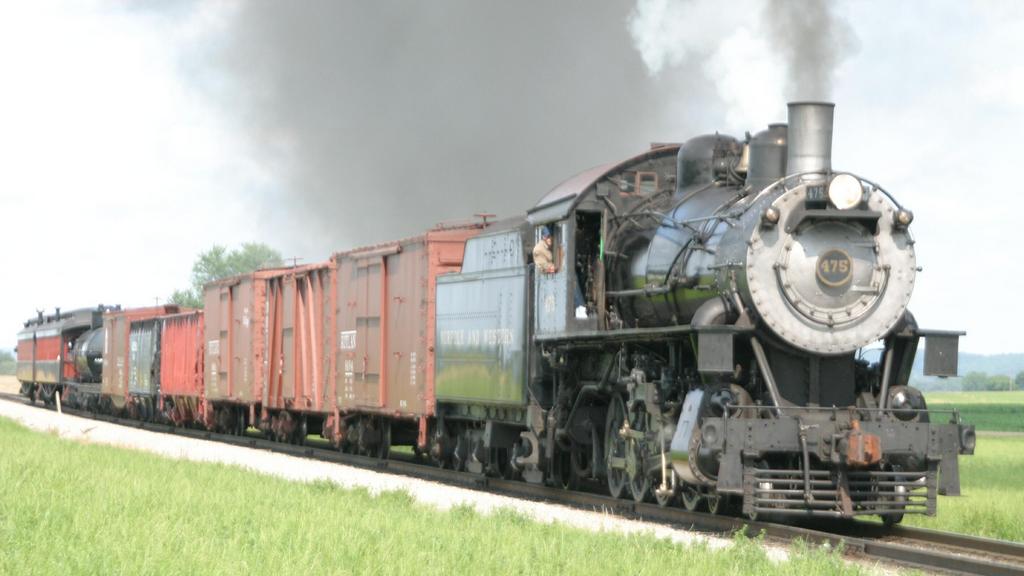
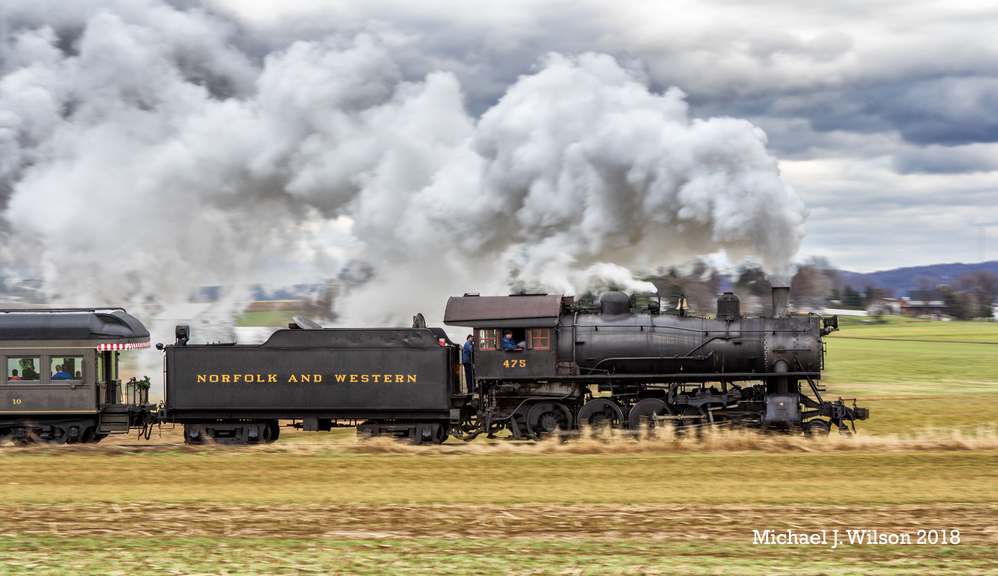
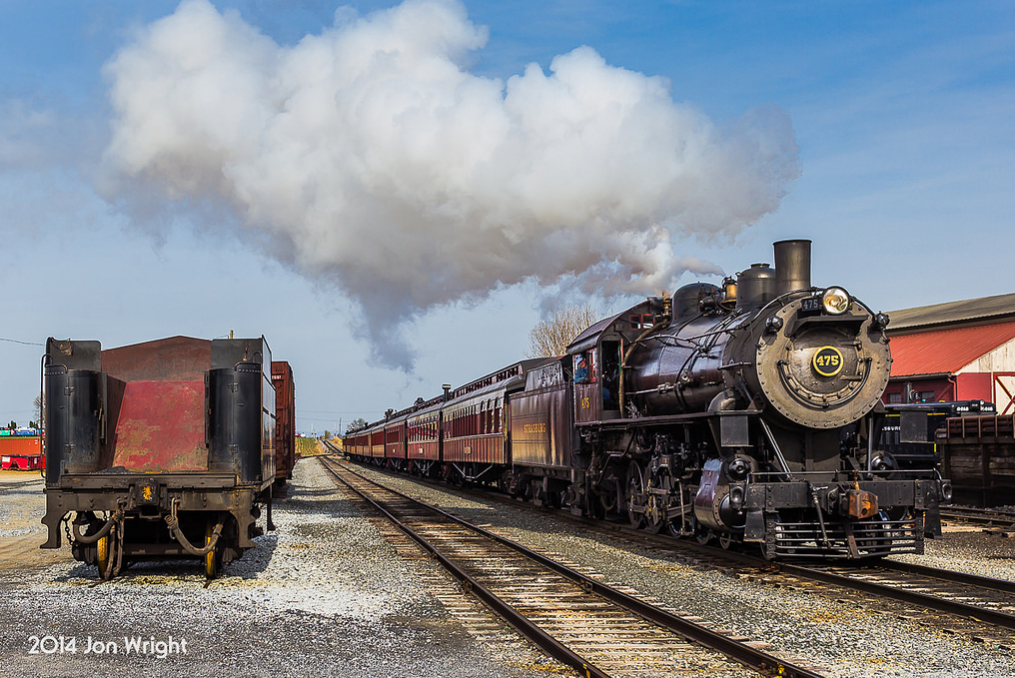
More recently Strasburg gave the #475 a makeover with the centered headlight that N&W gave many of the Mollies later in life.
#475 has also worn the #382 at various times. N&W #382 was one of the Ms frequently used on Abingdon Branch and captured in photos by O. Winston Link.

Last year, Norfolk Southern ran #611 up to Strasburg and let her operate on Strasburg for a couple months. This may have been the first time that #475 and #611 ever met, but even if it wasn't it was the first time in a long time since they'd been side by side.


In reply to LS_BC8 :
Union Pacific also had some

 Kansas City Southern also had a monster of a 3-truck Shay
Kansas City Southern also had a monster of a 3-truck Shay

Some operators of Shays and Heislers tried converting them to diesel operation as a cost-saving measure. The results were always quite interesting.
Canadian Forest Products sliced the entire cab and boiler and tender off, and built a new diesel switcher body and fitted it with a Buda diesel engine. The crankshaft segment was removed from the driveshafts and replaced with a straight shaft with a sprocket. The engine had a torque converter and a forward and reverse gearbox, then ran a chain down to the driveshaft.

More than once, a Heisler had its boiler yanked off and a large internal combustion engine was mounted to drive the gearbox/transfer case that the two steam cylinders usually drove. Heisler even tried offering this setup from the factory, but high cost and low demand meant they weren't successful.
There is this critter, which appears to be built off a single truck of a Heisler.

And this delightfully Mad Maxian abomination that is a Heisler frame and trucks with a '30s car body perched on top.

There is this particularly baffling and homely contraption that appears to have been a Climax. Not sure what the deal is with the Popemobile-esque cab on top of the original cab.
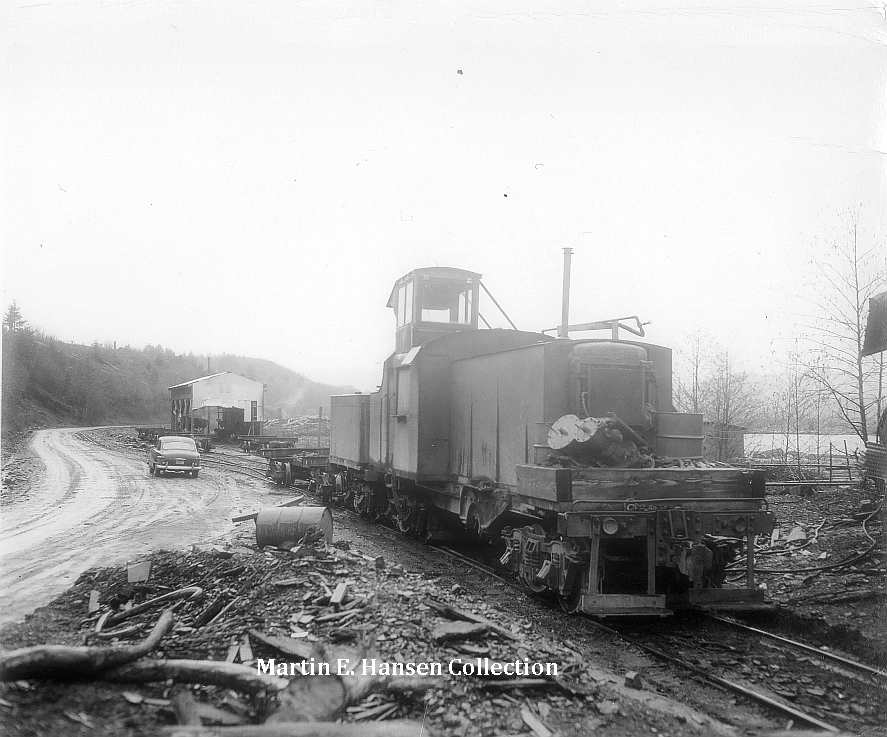

You'll need to log in to post.